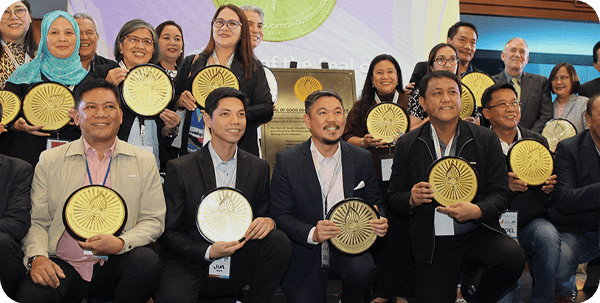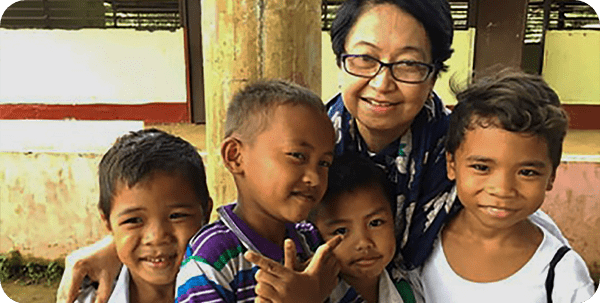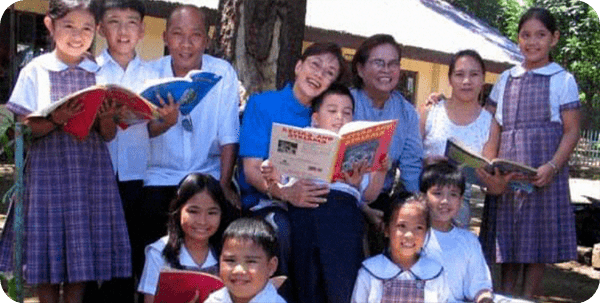On Infrastructure and Teacher Development
Rogie Espulgar: A pleasant afternoon to all of you. It’s really an honor to be a part of this sharing engagement across the regions through the Konrad Adenauer Political and Civic Engagement Spaces.
There are a lot of teachers that show the present status of education in the Philippines, from the evolution of the curriculum, to the existing infrastructure, to the availability of learning resources, to the completeness of physical facilities in our schools, to the extent of stakeholder engagement and teacher development programs, among others.
Schools have different contexts in terms of needs and vary on how these needs are given attention. The COVID 19 pandemic was among the challenging events in the implementation of basic education in our country and Bacjawan Sur Elementary School in the municipality of Concepcion, Iloilo Philippines, where I am presently connected, faced a lot of struggles in the New Normal.
To give you a scenario of Bacjawan Sur Elementary School, it is a primary school turned into a complete elementary school because of the sudden increase of enrollment from a hundred to three-fold of that (number). This increase of the learner population was due to the presence of housing units provided to the victims of Typhoon Yolanda in 2013. There are 14 teachers catering to around 370 learners but there were only five standard classrooms for temporary learning spaces and single detached segregated toilets; handwashing facilities and water sources are also limited. These are just few of the issues and concerns that need to be addressed by a single school prior to the opening of the School Year 2020-2021 under the New Normal. Our topic is focused on infrastructure and teacher development and I will be sharing our experiences on how we thrived.
The provision of standard classrooms will take a lot of process, such as reporting to the Enhanced Basic Education Information System. It’s a data base of education statistics, sector performance indicators in public and private schools, learning centers, and other education service providers. The needs were identified and included in the planning for the allocation of funds. All the rest of the processes entailed schools to wait.
But, of course, the lack of classrooms for our learners was a need that had to be addressed immediately. Our school division provided us P400,000, enough to build six temporary learning spaces. Our local government, headed by our municipal mayor, Dr. Bañez, also provided us an additional P400,000 for the improvement of the TLS. We saved a lot of donations for an additional site for the proposed additional classrooms from the local government unit and other NGOs. Our barangay officials were also on top of giving us assistance.
The point of sharing this is we have lots to be addressed when it comes to infrastructure. It is not only the concern of the Department of Education. In the present educational structure, our local education stakeholders can also do their share. It is indeed everyone’s responsibility to provide the best possible learning spaces for our learners. As mentioned by Mayor Rex yesterday, it really takes a village to educate a child.
The New Normal in education has the Department of Education exploring different learning modalities to cater to the various needs of our learners, and this is a new experience on the part of our teachers. When we started distance education, each school prepared the contextualized learning continuity plan adopted from Department Order No. 12 Series of 2020. From each school, the interventions were laid down to ensure learning continuity, and that includes capacity building of teachers. We went through a series of training to include LDM 1 or what we call the Learning Delivery Modalities for administrators, and the Learning Delivery Modality 2 for our teachers. These short term courses capacitate teachers to handle distance education and it is on its second year of implementation. Each school is also conducting SLACs or what we call the School Learning Action Cells based on DepEd Order No. 35 series of 2016. What we do in SLACs is we have sessions conducted by groups of teachers engaged in collaborative learning sessions to solve shared challenges encountered within the context of the school. A lot of virtual trainings were conducted by our division, our regional office, and our DepEd central office on different topics to include the preparation of the contextualized self-learning modules, capacity building of our LSAs or the Learning Support Aids, mental health, and psycho-social support, to mention a few.
While we believe that DepEd is facing a lot of cuts focusing on infrastructure and teacher development, school principals are empowered by Republic Act 9155, where decentralization takes place. It’s really in the hands of our school heads to improve operations through the proper utilization of financial and human resources. I believe that the successful implementation of basic education in the Philippines even during this time of the pandemic will lie mostly in the capacity of school leaders to navigate the school.
I am Mr. Rogie Gonzales Espulgar, the school principal. It is my priority to provide quality education to our Filipino learners. Para sa bata, para sa bayan.
Alina Reiss: it’s different from the other perspective that we’ve heard so far. So, because you put a lot of esteem on the role of principals in delivering quality education, what would you share as the best practices in difficult times that we could take home to our own schools and check whether certain things are in place or planned in the same way?
RE: This pandemic really affected the implementation of education in the Philippines, not only in our locality, but also in the whole Philippines. And if there is one thing that I have learned in my 15 years of teaching, is that education is really a shared responsibility. If we want to get the most in providing basic education to our students, we must involve all the stakeholders. We must involve the whole school and the community. More than ever, during this time of the pandemic, the more that we involve our parents, the guardians, our local government unit, our community members, the more we can provide more quality, accessible, relevant basic education delivery. It really takes a village to educate a child, so if you want to provide quality education, you have to help each other—all the members of the community must be involved.
AR: So how do you do about it? Do you have a parents’ roundtable? How easy is it to engage the parents and what are your mechanisms to engage other stakeholders, especially in COVID times, which makes it more difficult?
RE: When we started distance learning, most of our students in the Philippines had module print learning modalities, meaning self-learning modules. The teachers are not there. The learners are learning at home. We talked with our parents, our guardians, members of the family who can provide technical assistance to our students. They served as learning support. So, before we conducted the School Year 2020-2021, we prepared a school learning continuity plan on how to go about the very next school year. We wanted to involve all the education stakeholders. We conducted meetings with our parents, with our local officials, and we have this collaboration with the LGUs. The question was, who will be serving as learning support aids of our learners? And so we utilized our parents and guardians. We provided trainings to our parents, we taught them how to go about accomplishing the learning support materials of our learners. It’s not easy, much more because we find it difficult to communicate with our learners. It’s either we conduct home visits or call those learners who have mobile phones. And that’s one thing that we have to strengthen in the distance learning education that we have, that is, providing learning support to our learners. This is how parents and guardians play an important role in the delivery of distance learning.
AR: As a principal, what kind of support do you wish for from the government?
RE: I think if there is one thing that I would like to improve in the implementation of distance learning in this time of pandemic is the Internet connection. Majority of our schools in the Philippines have no stable Internet connection and we know that most of our learning competencies are through the Internet. We want to have that stable Internet connection for us to improve our teaching and learning processes. In Concepcion, there are 36 schools, including high schools and I think only the mainland schools can access Internet connection. Those schools in the islands, in the mountains, can hardly reach the signal for the Internet connection, so I would appeal to the government that if there is one thing that we want to improve in the Department of Education: some of our curriculum, our competencies require Internet connection and so there are some things that we cannot do and that are beyond our control.
AR: We have someone from the audience asking whether the online learning platforms are free of charge. Are they available or do you use your own applications to facilitate student learning? How do you do it in your school?
RE: As what I have mentioned earlier, in the municipality of Concepcion, or even in the school division of Iloilo in the Philippines, majority of our learners are learning through our self-learning modules. So, we may combine Internet connectivity platforms but we are mainly using printed modules. The parents get the modules from the school, then these will be answered by our learners at home. We hardly use the Internet in this time of the pandemic because of issues in the Internet connection. So, I can say that majority of our learners are using printed modules instead of the Internet.




